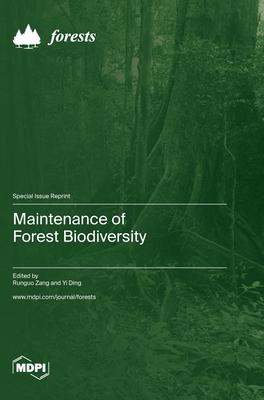Among terrestrial ecosystems, forests play a dominant role in maintaining biodiversity and providing ecosystem functioning, such as nutrient cycling, carbon sequestration, and ecosystem stability. Over the past several decades, however, global forests are facing unprecedented pressure from climate change and anthropogenic disturbances, resulting in a high rate of biodiversity loss due to deforestation, fragmentation, and degradation. Determining how to maintain biodiversity is extremely urgent if we want to achieve the aims of the Convention on Biological Diversity (CBD) and the Sustainable Development Goals (SDGs). The complex structure, species interaction, heterogenic environment, and regional species pool all affect the spatial and temporal patterns of forest species, but it is still unclear how these effects maintain long-term forest biodiversity as forests undergo rapid variations in habitat features under global change. This reprint includes sixteen published articles related to the dynamics of forest spatial structure, community assembly, forest recovery patterns after disturbance, spatial distribution of species diversity, effects of abiotic and biotic variables on understory species diversity, and above- and below-ground biotic interactions. These studies cover different forest types across varied spatial and temporal scales, as well as different biological groups (plants, birds and microbes). We acknowledge all authors who contributed to this reprint "Maintenance of Forest Biodiversity" of Forests. We hope this reprint can improve our understanding of the underlying mechanisms of forest biodiversity maintenance.

Maintenance of Forest Biodiversity
Among terrestrial ecosystems, forests play a dominant role in maintaining biodiversity and providing ecosystem functioning, such as nutrient cycling, carbon sequestration, and ecosystem stability. Over the past several decades, however, global forests are facing unprecedented pressure from climate change and anthropogenic disturbances, resulting in a high rate of biodiversity loss due to deforestation, fragmentation, and degradation. Determining how to maintain biodiversity is extremely urgent if we want to achieve the aims of the Convention on Biological Diversity (CBD) and the Sustainable Development Goals (SDGs). The complex structure, species interaction, heterogenic environment, and regional species pool all affect the spatial and temporal patterns of forest species, but it is still unclear how these effects maintain long-term forest biodiversity as forests undergo rapid variations in habitat features under global change. This reprint includes sixteen published articles related to the dynamics of forest spatial structure, community assembly, forest recovery patterns after disturbance, spatial distribution of species diversity, effects of abiotic and biotic variables on understory species diversity, and above- and below-ground biotic interactions. These studies cover different forest types across varied spatial and temporal scales, as well as different biological groups (plants, birds and microbes). We acknowledge all authors who contributed to this reprint "Maintenance of Forest Biodiversity" of Forests. We hope this reprint can improve our understanding of the underlying mechanisms of forest biodiversity maintenance.